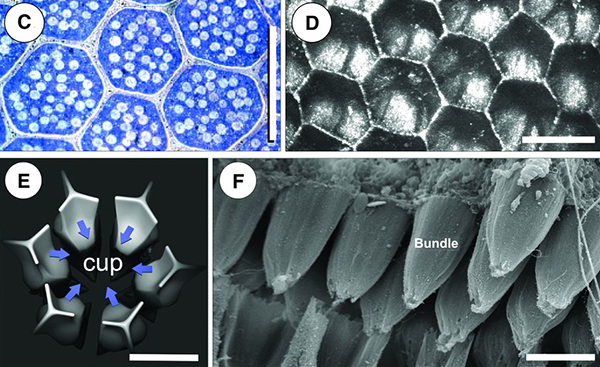Fish have some of the most amazing retinas in the animal kingdom. Like other fish species that live in environments with little to no light, the elephantnose fish (Gnathonemus petersii) use electrical fields to navigate through dark and murky waters. However, unlike some of those species, the elephantnose fish has not lost its eyes through evolution and uses vision for some functions.
This paper published in Science back in May, 2012 by authors Moritz Kreysing, Roland Pusch, Dorothee Haverkate, Meik Landsberger, Jacob Engelmann, Janina Ruiter, Carlos Mora-Ferrer, Elke Ulbricht, Jens Grosche, Kristian Franze, Stefan Streif, Sarah Schumacher, Felix Makarov, Johannes Kacza, Jochen Guck, Hartwig Wolburg, James K. Bowmaker, Gerhard von der Emde, Stefan Schuster, Hans-Joachim Wagner, Andreas Reichenbach, and Mike Francke shows that the elephantnose fish has absolutely unique and interesting structures that optimize light capture ability and make them insensitive to spatial noise. Also in the mesopic range they match the rod and cone opsin sensitivity curves allowing the use of both rods and cones throughout large ranges of light intensities, but importantly, arrange the cone photoreceptors in functional assemblies that act as photonic reflectors, creating lightwells in a sense that optimize photon capture. The rod photoreceptors meanwhile are positioned *behind* the photonic lightwells or reflectors. The result is that the photonic lightwells or reflectors become wavelength sensitive light intensifiers that functionally match the dynamic range of both rods and cones while boosting sensitivity in the red wavelengths that are the first wavelengths filtered out by water. The thinking is that this allows the elephantnose fish to easily see large predators in murky or turbid environments.
